#melon lanatus
Text
i found one. more specifically i found an outfit.
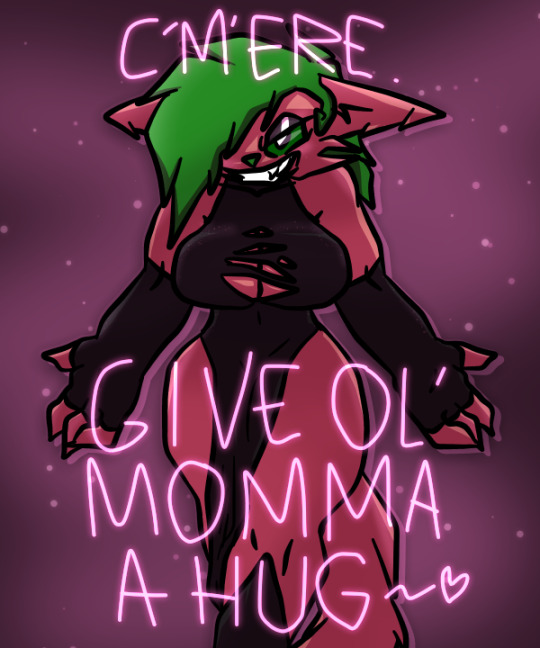
comparison between mine and og artist's versions below, there's someone else's oc beside her so i just decided to crop her out lmfao

#oc art#melon lanatus#did i give her a slight bit too much ass? ah who gives a fuck that's basically her character lmfao
3 notes
·
View notes
Text
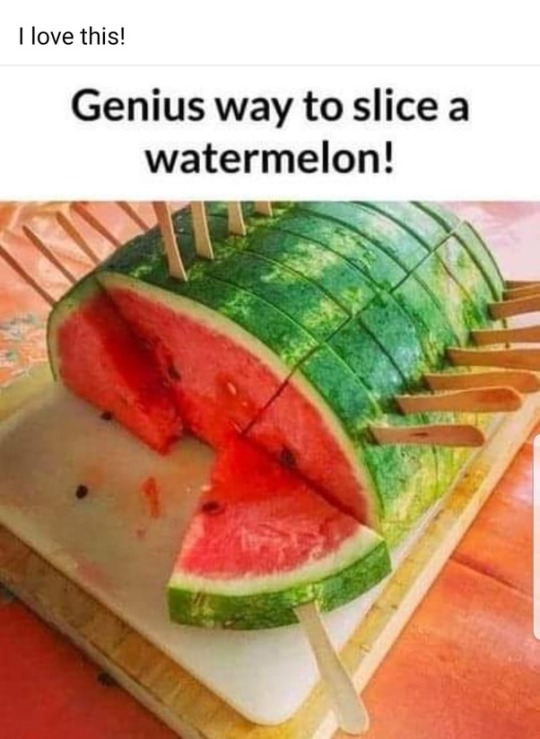
Kordofan melons from Sudan are the closest relatives and may be progenitors of modern, cultivated watermelons. Wild watermelon seeds were found in Uan Muhuggiag, a prehistoric site in Libya that dates to approximately 3500 BC. Watermelons were domesticated in north-east Africa, and cultivated in Egypt by 2000 BC, although they were not the sweet modern variety. Sweet dessert watermelons spread across the Mediterranean world during Roman times.
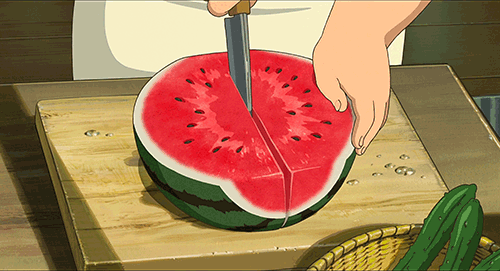
Many 5000-year-old wild watermelon seeds (C. lanatus) were discovered at Uan Muhuggiag, a prehistoric archaeological site located in southwestern Libya. This archaeobotanical discovery may support the possibility that the plant was more widely distributed in the past.
In the 7th century, watermelons were being cultivated in India, and by the 10th century had reached China. The Moors introduced the fruit into the Iberian Peninsula, and there is evidence of it being cultivated in Córdoba in 961 and also in Seville in 1158. It spread northwards through southern Europe, perhaps limited in its advance by summer temperatures being insufficient for good yields. The fruit had begun appearing in European herbals by 1600, and was widely planted in Europe in the 17th century as a minor garden crop.
Early watermelons were not sweet, but bitter, with yellowish-white flesh. They were also difficult to open. Through breeding, watermelons later tasted better and were easier to open.
European colonists and enslaved people from Africa introduced the watermelon to the New World. Spanish settlers were growing it in Florida in 1576. It was being grown in Massachusetts by 1629, and by 1650 was being cultivated in Peru, Brazil and Panama. Around the same time, Native Americans were cultivating the crop in the Mississippi valley and Florida. Watermelons were rapidly accepted in Hawaii and other Pacific islands when they were introduced there by explorers such as Captain James Cook. In the Civil War era United States, watermelons were commonly grown by free African people and became one symbol for the abolition of slavery. After the Civil War, African people were maligned for their association with watermelon. The sentiment evolved into a racist stereotype where Africn people shared a supposed voracious appetite for watermelon, a fruit long correlated with laziness and uncleanliness.
Seedless watermelons were initially developed in 1939 by Japanese scientists who were able to create seedless triploid hybrids which remained rare initially because they did not have sufficient disease resistance. Seedless watermelons became more popular in the 21st century, rising to nearly 85% of total watermelon sales in the United States in 2014

A melon from the Kordofan region of Sudan – the kordofan melon – may be the progenitor of the modern, domesticated watermelon. The kordofan melon shares with the domestic watermelon loss of the bitterness gene, while maintaining a sweet taste, unlike other wild African varieties from other regions, indicating a common origin, possibly cultivated in the Nile Valley by 4360 BP (before present)

#kemetic dreams#watermelon#wow#kordofan#sudan#ta seti#nubia#progenitor#nile valley#african#afrakan#africans#libya#north africa#african culture#north ifriqiya#ifriqiya#kordofan melon
24 notes
·
View notes
Text
Cookieverse: Schools
Milkyway Elementary
Known Students
Alfajor Cookie (Inez)
Apple Cookie
Apple Dodger Cookie (Ferb)
Astronaut Food Cookie (Dib Membrane)
Babosa Cookie (Tanis)
Banana Pancake Cookie (Quincy)
Basil Cookie (Buttercup)
Bell Pepper Cookie
Berry Gel Cookie (Sally)
Berry Smoothie Cookie (Keesha)
Bitter Melon Cookie (Violet)
Blackberry Pie Cookie (Schroeder)
Blue Corn Cookie (Boomer)
Blue Taro Cookie (Tim)
Blueberry Kulfi Cookie (Baljeet)
Blueberry Jam Cookie (Lucy)
Burrito Cookie (K.O.)
Candy Bone Cookie (Skid)
Candy Jack Cookie (Ralphie)
Carrot Puff Cookie (Arnold)
Cavatappi Cookie (Frieda)
Champurrado Cookie (Carlos)
Chili Dog Cookie (Hoagie P. Gilligan Jr./Numbuh 2)
Chocolate Swirl Cookie (Jimmy Neutron)
Concord Juice Cookie (Sibella)
Coney Dog Cookie (Winnie)
Cornflower Cookie (Franklin)
Cranberry Flan Cookie (Jackie)
Cream Pie Cookie (Charlotte)
Cucumber Cookie (Dendy)
Daffodil Cookie (Dorothy Ann)
Dandelion Cookie (Jimmy)
Dirt Cake Cookie (Pigpen)
Ditalini Cookie (Leo)
Farfalle Cookie (Annie)
Food Coloring Cookie (Adeleine)
Fruit Punch Cookie (PPG!Brick)
Ghost Pipe Cookie (Phantasma)
Gold Truffle Cookie (Princess Morbucks)
Gouda Cookie (Buford)
Green Bean Cookie (Phoebe)
Hokey Pokey Cookie (Wallabee Beetles/Numbuh 4)
Honeydew Cookie (Elsa Frankenteen)
Key Lime Cookie (Cyberchase!Matt)
Lemon Gel Cookie (Charlie Brown)
Marshmallow Bunny Cookie (Panini)
Matcha Choco Cookie (Kuki Sanban/Numbuh 3)
Mellowcreme Pumpkin Cookie (Pump)
Mint Cream Cookie (Peppermint Patty)
Mochi Cookie (Wanda)
Nori Cookie (Butch)
Oleander Cookie (Grim Adventures!Mandy)
Orchid Cookie (June)
Pink Lemonade Cookie (Blossom)
Pixy Powder Cookie (Timmy Turner)
Pudding Pop Cookie (Chowder)
Pumpkin Brownie Cookie (Marcie)
Raspberry Jam Cookie (Linus)
Salsa Chip Cookie (Phineas)
Salted Caramel Cookie (Abigail Lincoln/Numbuh 5)
Soda Bread Cookie (Fanny Fulbright/Numbuh 86)
Soft Serve Cookie (Funkin Dusk)
Strawberry Fool Cookie (Nigel Uno/Numbuh 1)
Sufganiyah Cookie (Isabella)
Sugar Cookie (Bubbles)
Star Jelly Cookie (Zim)
Tangelo Cookie (Billy)
Tangerine Tanghulu Cookie
Vieux Lille Cookie (Sarah)
Walnut Cookie
Former Students
Five-Layer Cookie (DCFDTL); were kidnapped and brainglazed by Black Olive Cookie (Father)
Tarator Cookie (Vendetta); Expelled for horrific bullying and her dessert monster creations hurting other students. Also the incident where she tried to take over the school on show-and-tell day. That too.
Known Faculty
Beacon Apple Cookie (Bea Spells-A-Lot, part-time tutor)
Gelatin Cookie (Edd/Double D, part-time science tutor)
Honeycrisp Apple Cookie (Ms. Frizzle, teacher)
McIntosh Red Cookie (Will Wedgewood/Wonder-Red; teacher)
Nigiri Cookie (Makoto Nijima, part-time tutor)
Orange Pippin Cookie (Ms. Keene, teacher)
Sucrose Junior High
Known Students
Apple Pie Cookie (Paula Polestar)
Beacon Apple Cookie (Bea Spells-A-Lot)
Blueberry Churro Cookie (Frida Suarez)
Bratwurst Cookie (Rolf)
Camembert Cookie (Ed)
Candy Jewel Cookie (Jewel Sparkles)
Caprese Salad Cookie (Kevin)
Chocolate Truffle Cookie (Trixie Carter)
Circus Peanut Cookie (Peanut Big Top)
Custard Doughnut Cookie (Jeff Andonuts)
Ergot Cookie (Hotaru Tomoe/Sailor Saturn)
Fish Stick Cookie (Lee Kanker)
Garlic Cookie (EW!Dawn)
Gelatin Cookie (Edd/Double D)
Granola Cookie (Jonny)
Grape Jam Cookie (Mabel)
Gum Scrap Cookie (Ness)
Jawbreaker Cookie (Eddy)
Lanatus Dragon Cookie (Jake Long)
Lemon Swirl Cookie (Lucas)
Limburger Cookie (May Kanker)
Mashed Potato Cookie (Marie Kanker)
Orange Swirl Cookie (Claus)
Passion Fruit Cookie (Nazz)
Peanut Butter Cookie (Dipper)
Pork Rind Cookie (Porky Minch)
Prickly Pear Cookie (Kumatora)
Rocket Pop Cookie (Dot Starlight)
Russet Potato Cookie (Arthur “Spud” Spudinski)
Spaghetti Marinara Cookie (Spot Splatter Splash)
Sprinkle Cookie (Crumbs Sugar Cookie)
Valerian Cookie (Pillow Featherbed)
Whipped Cocoa Cookie (Mittens Fluff 'N' Stuff)
White Truffle Cookie (Pacifica Northwest)
Yellow Lily Cookie (Rose)
Fructose High School
Known Students
Ackee Fruit Cookie (Monika)
Apple Cider Cookie (Applejack)
Beef Bowl Cookie (Yu Narukami)
Berry Soda Cookie (Ami Mizuno/Sailor Mercury)
Blackberry Cheesecake Cookie (Totally Spies!Mandy)
Black Currant Cookie (Raven)
Black Rose Cookie (Sam Manson)
Buffalo Sauce Cookie (Randy Cunningham)
California Roll Cookie (Naoto Shirogane)
Candy Ring Cookie (Rarity)
Chamomile Cookie (Yuri)
Chocolate Crepe Cookie (Ann Takamaki)
Clam Cookie (Cyborg)
Confetti Cake Cookie (Pinkie Pie)
Cordyceps Cookie (Shawn)
Coriander Cookie (Starfire)
Creme Sandwich Cookie (Danny Fenton/Phantom)
Curly Fry Cookie (Howard Weinerman)
Curry Cookie (Futaba Sakura)
Gala Apple Cookie (Sammy)
Gateau Cookie (Vanessa)
Gummy Fish Cookie (Lagoona Blue)
Haricot Vert Cookie (Jean-Sebastian Renault/Wonder-Green)
Hero Cookie
Jelly Worm Cookie (Ghoulia Yelps)
Kale Cookie (Robin)
Katsu Sando Cookie (Akira Kurusu/Joker)
Kumquat Cookie (Leshawna)
Lemon Mint Cookie (Frankie Stein)
Marshmallow Pie Cookie (Usagi Tsukino/Sailor Moon)
Manju Cookie (Yukiko Amagi)
Meat Bun Cookie (Ryuji Sakamoto)
Melopita Cookie (Cleo de Nile)
MRE Cookie (TD!Brick)
Myrtle Cookie (Minako Aino/Sailor Venus)
Nanaimo Bar Cookie (Owen)
Nigiri Cookie (Makoto Nijima)
Orange Blossom Cookie (Zoey)
Orange Creme Cookie (Jasmine “Jazz” Fenton)
Orzo Cookie (Mike)
Pansy Cookie (Fluttershy)
Papanași Cookie (Mariana Kretzulesco/Wonder-Pink)
Pepperoni Pizza Cookie (Geoff)
Pink Licorice Cookie (Draculaura)
Pizza Cookie
Pizza Pocket Cookie (Total Drama!Sam)
Poppy Seed Cookie (Clover)
Potato Stew Cookie (Yosuke Hanamura)
Protein Bar Cookie (Tyler)
Purple Tea Cookie (Sierra)
Red Delicious Cookie (Amy)
Ruby Choco Cookie (Sayori)
Salsa Cookie (Candace)
Samosa Cookie (Noah)
Sandwich Cookie
Seaweed Brownie Cookie (Bridgette)
Shaved Ice Cookie (Abbey Bominable)
Sour Straw Cookie (Tucker Foley)
Some Total Drama contestants (Excluding Biscuit Cookie/Ezekiel, obviously.)
Sports Drink Cookie (Rainbow Dash)
Steak Cookie (Chie Satonaka)
Strawberry Cupcake Cookie (Natsuki)
Tin Cookie (Makoto Kino/Sailor Jupiter)
Toaster Tart Cookie (Harold)
Tofu Cookie (Beast Boy)
Vegemite Cookie (TD!Jasmine)
Veggie Chip Cookie (Totally Spies!Sam)
Vichyssoise Cookie (Rise Kujikawa)
Watermelon Snake Cookie (Deuce Gorgon)
Wolfsbane Cookie (Clawdeen Wolf)
Wonton Cookie (Alex)
Yakitori Cookie (Kanji Tatsumi)
Former Students
Cobalt Cookie (Scarlett; Expelled after it was discovered that she was trying to recruit students to the Cookies of Darkness)
Dagwood Sandwich Cookie (Norville “Shaggy” Rogers; graduated)
Deviled Egg Cookie (Fred Jones; graduated)
Sweet Potato Cookie (Velma Dinkley; graduated)
Toxic Sludge Cookie (Izzy; expelled due to her crazy antics)
Patisserie Academy
A high-end private high school.
Known Students
Buttered Pancake Cookie (Goro Akechi)
Champagne Cookie (Mitsuru Kirijo)
Chicken Salad Cookie (Haruka Tenou/Sailor Uranus)
Coffee Crisp Cookie (Cody)
Fruit Salad Cookie (Haru Okumura)
Galette Cookie (Lindsay)
Jagariko Cookie (Yusuke Kitagawa)
Loco Moco Cookie (Justin)
Rose Water Cookie (Senpai/Kenji Sakubara)
Saba Sashimi Cookie (Michiru Kaiou/Sailor Neptune)
Saffron Cookie (Alejandro)
Sashimi Cookie (Heather)
Tuxedo Cake Cookie (Mamoru Chiba/Tuxedo Mask)
Watercress Cookie (Dakota)
Former Students
Blueberry Cheesecake Cookie (Daphne Blake; graduated)
Sugarcane Academy
A university/college
Known Students
Black Rice Cookie (Krishna Ramanujon/Wonder Black)
Blackthorn Cookie (Faith Fernandez)
Blueberry Tart Cookie (Vicky Schmidt)
Calla Lily Cookie (Joy Johnson-Johijima)
Cherry Pepper Cookie (Amira Rashid)
Cypress Cookie (Setsuna Meiou/Sailor Pluto)
Elderberry Cookie (Oz)
Filius Blue Cookie (Dahlia Aquino)
Ghost Pepper Cookie (Damien LeVey)
Gummy Hoop Cookie (Gogo)
Henbane Cookie (Hope Halko)
Ikasumi Pasta Cookie (Zoe)
Keema Cookie (Aaravi Mishra)
Maki Roll Cookie (Hiro Hamada)
Potato Chip Cookie (Scott Howl)
Purple Kale Cookie (Liam de Lioncourt)
Rafflesia Cookie (Brian Yu)
Saltwater Taffy Cookie (Miranda Vanderbilt)
Sour Snake Cookie (Vera Oberlin)
Taco Cookie (Fred Frederickson IV)
Vodka Cookie (Polly Geist)
Yuzu Cookie (Honey Lemon)
Zucchini Cookie (Wasabi)
Former Students
Slushie Cookie (Boyfriend/Jacob; Dropped out)
Parfaedia Institute
An all-ages magic school set in the city of Parfaedia
Known Students
Acai Cookie (Twilight Sparkle)
Bay Laurel Cookie (TD!Dawn)
Clerodendrum Cookie (Musa)
Coralline Algae Cookie (Tecna)
Cream Puff Cookie
Fruity Puff Cookie (Leonard)
Nasturtium Cookie (Bloom)
Prune Juice Cookie
Sunflower Cookie (Stella)
Tulip Cookie (Flora)
Water Lily Cookie (Aisha)
Known Faculty
Almond Cookie (Preventing Magical Accidents & Mishaps professor)
Capricious Wizard (Substitute Teacher)
Eclair Cookie (History professor)
Espresso Cookie (Theorems of Coffee Magic professor)
Latte Cookie (Entry-Level Magic Circles professor)
Parfaedia Principal (Principal)
Former Students
Ackee Fruit Cookie (Monika, transferred to Fructose High)
Honeycrisp Apple Cookie (Ms. Frizzle, graduated)
Mistletoe Cookie (Icy, expelled)
Nightshade Cookie (Darcy, dropped out)
Prune Cookie (Yzma; graduated… Somehow… in her youth)
Zephyr Lily Cookie (Stormy, dropped out)
Scovilla
An all-ages school situated in Dragon's Valley
Known Students
Capsaicin Cookie
Jalapeño Cookie (Duncan)
Kimchi Cookie (Scott)
Known Faculty
Scovillia Headmaster (Headmaster)
Former Students
Mala Sauce Cookie (Graduated)
Buffalo Sauce Cookie (Randy Cunningham; transferred to Fructose High)
Sriracha Cookie (Chef Hatchet; Graduated)
Creme Knights Academy
A paladin/knight school situated in the Creme Republic
Known Students
Kouign-Amann Cookie
Known Faculty
Creme Knights Preceptor (Premier)
Former Students
Financier Cookie (Graduated)
Madeleine Cookie (Graduated)
MRE Cookie (TD!Brick; Transferred to Fructose High due to being bullied for his fear of the dark)
Snowbell Academy
An academy for cookies who wish to become holiday cookies
Known Students
Stollen Cookie
Strawberry Cream Cookie
4 notes
·
View notes
Text
3 notes
·
View notes
Text
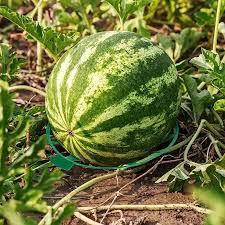
Hope you enjoyed the conversation on Monday Morning Mindfulness! As you may know, Watermelon is one of the best melons on the planet you can eat. Why? Because it's a HEALING FRUIT. You can live off this fruit for days with nothing else. But don't believe me, believe what you find when you do your own research!
Origin and emergence of the sweet dessert watermelon, Citrullus lanatus
Harry S. Paris*
Author information Article notes Copyright and License information PMC Disclaimer
Go to:
Abstract
Background and Aims Watermelons, Citrullus species (Cucurbitaceae), are native to Africa and have been cultivated since ancient times. The fruit flesh of wild watermelons is watery, but typically hard-textured, pale-coloured and bland or bitter. The familiar sweet dessert watermelons, C. lanatus, featuring non-bitter, tender, well-coloured flesh, have a narrow genetic base, suggesting that they originated from a series of selection events in a single ancestral population. The objective of the present investigation was to determine where dessert watermelons originated and the time frame during which sweet dessert watermelons emerged.
Key Findings Archaeological remains of watermelons, mostly seeds, that date from 5000 years ago have been found in northeastern Africa. An image of a large, striped, oblong fruit on a tray has been found in an Egyptian tomb that dates to at least 4000 years ago. The Greek word pepon, Latin pepo and Hebrew avattiah of the first centuries ce were used for the same large, thick-rinded, wet fruit which, evidently, was the watermelon. Hebrew literature from the end of the second century ce and Latin literature from the beginning of the sixth century ce present watermelons together with three sweet fruits: figs, table grapes and pomegranates. Wild and primitive watermelons have been observed repeatedly in Sudan and neighbouring countries of northeastern Africa.
Conclusions The diverse evidence, combined, indicates that northeastern Africa is the centre of origin of the dessert watermelon, that watermelons were domesticated for water and food there over 4000 years ago, and that sweet dessert watermelons emerged in Mediterranean lands by approximately 2000 years ago. Next-generation ancient-DNA sequencing and state-of-the-art genomic analysis offer opportunities to rigorously assess the relationships among ancient and living wild and primitive watermelons from northeastern Africa, modern sweet dessert watermelons and other Citrullus taxa.
Keywords: Archaeobotany, citron watermelon, Citrullus lanatus, Cucurbitaceae, colocynth, crop history, dessert watermelon, egusi watermelon, evolution under domestication, fruit sweetness, talmudic cucurbits
Go to:
INTRODUCTION
Watermelons, Citrullus Schrad., are among the most widely grown vegetable crops in the warmer parts of the world (Maynard, 2001; Wehner et al., 2001; Wehner, 2008). Over 3 400 000 hectares are planted annually, with production exceeding 102 000 000 t (http://faostat.fao.org/site/339/default.aspx). Few food items are as refreshing and appreciated on hot summer days as chilled slices of watermelon.
Citrullus (2n = 2x = 22) is a xerophytic genus native to Africa (Whitaker and Davis, 1962; Robinson and Decker-Walters, 1997). Other cultivated members of the genus, besides the familiar sweet dessert watermelon, are the citron and egusi watermelons and the colocynth (Jeffrey, 2001). The sweet dessert watermelon, though, has considerably less DNA sequence polymorphism than the others (Maggs-Kölling et al., 2000; Levi et al., 2000, 2001; Dane et al., 2004, 2007; Hwang et al., 2011; Nimmakayala et al., 2014a, b), indicating that it originated from a single founder population. The progenitor of the sweet dessert watermelon has been widely believed to be the colocynth or the citron watermelon and, recently, genomic sequencing has fostered the suggestion that the progenitor is the egusi watermelon (Guo et al., 2013). Another widely held belief is that sweet watermelons first diffused to Europe via Moorish Spain somewhat prior to 961 ce, from the Indian subcontinent, facilitated by Islamic conquests (Watson, 1983). However, there is much evidence showing that the history of the sweet dessert watermelon matches none of the above beliefs concerning progenitor or geographic origin. My objective is to gather and assess this evidence, and trace the origin and emergence of the sweet dessert watermelon.
0 notes
Text
¿Cuánto tiempo tarda en dar la sandía?
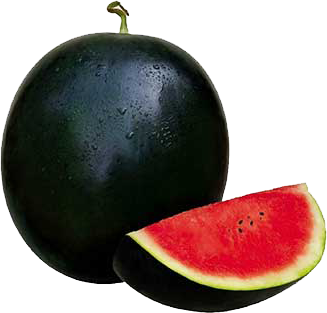
La recolección en la sandía suele comenzar a los 80-100 días desde la plantación, dependiendo de cultivares, fechas de plantación, climatología, etc. Entre la fecundación y la recolección transcurre un periodo de 35-40 días en sandía sin injertar y una semana más en sandía injertada.
¿Dónde se da la sandía en España?
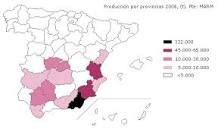
Las zonas importantes de cultivo se encuentran en Almería para cultivo en invernadero y en Valencia para cultivo al aire libre.
¿Cómo se llama la sandía desde el punto de vista botánico?
La sandía [Citrullus lanatus (Thunb.) Matsum & Nakai var. lanatus], conocida también como melón de agua o patilla, es una planta dicotiledónea, herbácea y anual que pertenece a la familia botánica Cucurbitaceae.
¿Qué fecha se siembra la sandía?

La sandía se siembra desde la segunda quincena del mes de septiembre a la primera quincena del mes de octubre. El método que se utiliza es de siembra directa. Antiguamente se fertilizaba con abonos naturales de ganado vacuno y caballar.
¿Cuánto hay que regar la sandía?
·Riego de la sandía
Las sandías necesitan diferentes patrones de riego según su estadío: Al inicio de la plantación: riegos abundantes de unos 20-30 minutos. Cuando la planta coge fuerza: riegos más ligeros cada 2-3 días.
¿Dónde están las mejores sandías?
La Tierra Prometida de una buena Sandía es Almería específicamente, en El Ejido, una zona líder en la producción de cientos de frutas, hortalizas y más, tiene miles de hectáreas preparadas para dar a la luz a las mejores sandías en España.
¿Cómo distinguir las sandías de Marruecos?
Las sandías de Marruecos son aquellas de forma ovalada y de color verde a rayas. En Marruecos las llaman "melonas" por su forma. Como su nombre indica las sandías son originarias de Marruecos, concretamente la temporada comienza en Zagora y continúa por Tarudant, Chichaoua y otras ciudades y provincias de Marruecos.
¿Qué abono echarle a melones y sandías?
Abono NK 5,2-50 sólido con alta concentración en potasio con EDTA. Aplicar en riego localizado a razón de 5 kg/ha, realizando 1 ó 2 aplicaciones, espaciadas en 7 días, una vez que el fruto ha detenido su crecimiento. Las dosis se pueden aumentar hasta 15 L/ha.
1 note
·
View note
Text
Watermelons Planting And How to Grow
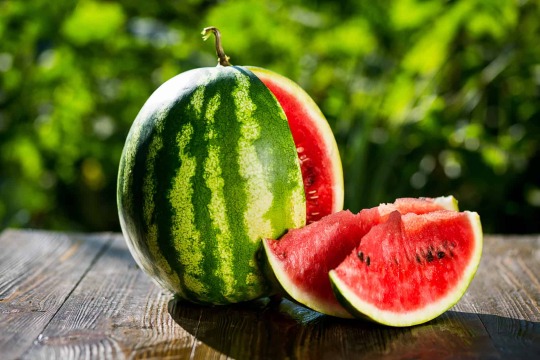
Because watermelons (Citrullus lanatus) need a long period of warm weather to grow well, they tend to be more popular in warmer climates with long growing seasons. However, gardeners in colder climates can still have success in growing watermelons by starting seeds indoors or purchasing young plants from a nursery, and by growing shorter-season varieties. Depending on the variety of watermelon, it can take between 70 and 100 days to go from planting to harvest.
How to Plant Watermelons
- Sow seeds 1/2 to 1 inch deep outdoors or 1/4 to 1/2 inch deep in seed-starting pots indoors.
Tip: To allow for more root growth, use larger starting pots than you would for most seeds. Also, consider using compostable pots that can be cut away or planted directly in the garden, as this will minimize the risk of damaging seedlings’ tender roots during transplanting.
- If direct seeding outdoors, sow 4 to 6 seeds per hill, eventually thinning to 2 to 3 seedlings.
HOW TO
Watering
Watering is very important—from planting until fruit begins to form. While melon plants are growing, blooming, and setting fruit, they need 1 to 2 inches of water per week.
Keep soil moist, but not waterlogged. Water at the vine’s base in the morning, and try to avoid wetting the leaves and avoid overhead watering. Reduce watering once fruit are growing. Dry weather produces the sweetest melon.
Fertilizing
If you choose to fertilize (and many do), make sure it delivers more nitrogen than phosphorus and potassium, as this will encourage leaf and vine growth. However, after flowering begins, use a fertilizer with less nitrogen to instead encourage flowers and fruit. We like to use a seaweed-based fertilizer.
Flowering and Fruiting
Vines produce male and female flowers separately on the same plant. They often begin producing male flowers several weeks before the females appear. Do not be concerned if the male flowers fall off. The female flowers (which have a swollen bulb at the base) will stay on the vine and bear fruit.
Blossoms require pollination to set fruit, so be kind to the bees! Learn how to support pollinators in your garden.
As the fruit is ripening, prevent rotting by gently lifting it and putting cardboard or straw between the fruit and the soil.
Read the full article
0 notes
Text
Bovine collagen 4 differentially regulates planarian base mobile or portable strength as well as family tree progression.
The person have also been getting nausea as well as declined virtually any oral intake. At this time, the likely diagnosis of microbial epidermis contamination had been considered and also the affected person ended up being accepted. Intra-venous water ended up being given to rehydrate the person and she was helped by topical cream antibiotic as well as antipyretic. Your patch solved within 14 days with no scarring damage. Since dental practices, you should be aware of bacterial infection around the pen-oral area and consider it as being a part of a new differential diagnosis to ensure that the right treatment method can be granted.Bean frequent variety computer virus (BCMV) along with Bean frequent variety necrosis computer virus (BCMNV) are among the biggest dangers with regard to click beans generation in Getaway because of their seedling, aphid as well as physical tranny. Outdated useful Bulgarian snap see more vegetable varieties are increasingly being neglected, due to high percentage regarding virus-infected seeds. Breeding immune cultivars is the best approach to fix the problem. The hereditary manage in direction of both viruses can be certain simply by one particular dominating My spouse and i gene as well as a variety of recessive (bc-u, bc-1, bc-1(Only two), bc-2, bc-2(Only two) as well as bc-3) body's genes. Our own goal was to recognize opposition gene permutations within innovative F8 propagation collections, produced by a pair of last longer than (A-8-40-7-2-1xIVT 7214) as well as (ZariaxRH 26D), through the using conventional and molecular approaches. Several strategies were sent applications for the characterization of these level of resistance gene makeup products: (we) leaf-abscission infection analyze built to identify My spouse and i gene through direct inoculation along with NL3 stress regarding BCMNV; (ii) intact-plant infection examination along with strain NY15 regarding BCMV to separate immune system genotypes, owning bc-ubc-1(Only two), bc-ubc-2(A couple of,)bc-ubc-2bc-3, My spouse and i, Ibc-1(2), Ibc-2(A couple of) or perhaps Ibc-3; (iii) PCR evaluation together with the following indicators: Surgical mark - SW13 (pertaining to My spouse and i gene), SBD5 (with regard to bc-1(2)), ROC11 (for bc-3) and CAPS -- eIFE4 (for bc-3); and also Several) high-temperature (more than 25 diplomas H) infection analyze using NL3 of BCMNV to impress wide spread necrosis in My spouse and i, Ibc-1, Ibc-1(Two), Ibc-1(2)bc-2(Only two) as well as Ibc-3. Some techniques used worked appropriately and also complemented each other. Important gene blend (Ibc-3) was established in several breeding traces with resistant reaction to BCMNV. They will be in the click bean breeding system with regard to virus opposition.The particular carotenoid biosynthetic path regulatory components ultimately causing lycopene accumulation are well described inside the product berry, tomato (Lycopersicon esculentum D.). The particular regulation components ultimately causing deposition associated with some other carotenoids as well as skin hues, nevertheless, are generally badly recognized. All of the tissue colors available in melon (Citrullus lanatus (Thunb.) Matsum. & Nakai) fruit causes it to be suitable for examining the regulation of the complete path. Carotenoid deposition had been measured inside more effective watermelon varieties, addressing four flesh hues and a couple ploidy quantities, all through fruit readiness.
#Crizotinib#CM272#Fluzoparib#Degrasyn#ACSS2 inhibitor#3-TYP#NU7026#PF-9366#TPX-0046#Mobocertinib#Mocetinostat#ULK-101#MK-8353#Super-TDU#CD38 inhibitor 1#Ferrostatin-1#MDL-28170#CA-074 methyl ester#Pentosan Polysulfate#Pemetrexed#Tecovirimat#Dubermatinib#PIM447#AUNP-12#Ponesimod
1 note
·
View note
Link
According to the farmers, the most difficult task in managing watermelon cultivation is the work of the side branches. In order to ensure that the vines that have good attachments are well nourished, the vines that grow like a maze are traced one by one and the branches are removed. By winding the vine into a loop; This seems to produce excellent produce with consistent taste. I work carefully one by one while bending down.
0 notes
Photo
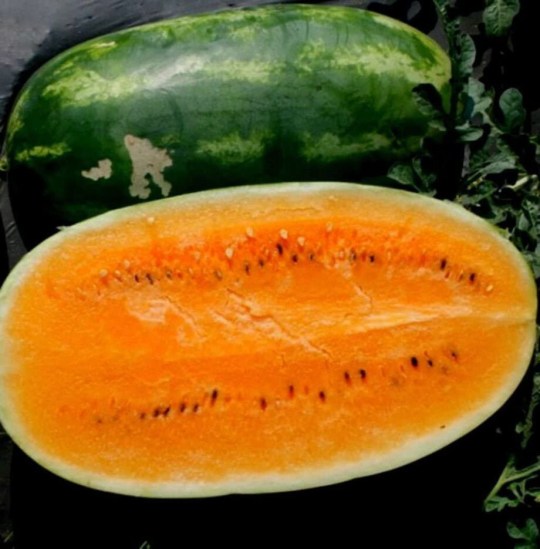
Tendersweet Orange Watermelon Seeds, Non-GMO, Organic, Heirloom, Open air Pollinated B25 This watermelon is an orange flesh variety. Producing large 10-15lb watermelons that are orange throughout and have minimal seeds. The rind is not as thick as other varieties, so its shelf life is not as long, but we have a feeling you won't have to worry about that. The fruit on this is sweet and juicy, without a hint of bitterness. Each plant can produce between 5-7 melons or 2-3 larger ones. Warm weather-loving and less susceptible to powdery mildew than other melons. Citrullus lanatus (90 days) Yummalicious orange, crisp, sweet, watermelon that is not only colorful but also intensely tasty. This is the standard for orange-fleshed watermelons. It is a long-type melon with markings similar to the All sweet type (dark green with lighter green strips). The average size is about 30 lbs. The taste and texture are excellent. An added advantage over Orangeglo is that the rind is tough enough to allow marketing at local/farmers' markets. This melon will be your favorite this summer, crisp, sweet, large, 35 pounds. This has a hollow heart, which I really enjoy. Seems to hold on the vine longer than most. Count: ~25+ This Heirloom is tender and very Sweet with oblong striped fruits that grow to 35 lbs Sow outdoors 4 weeks after the average last frost date and harvest in 90 days Plant Height is 15". plant spread is 72". yields 35 lb fruit Annual for all growing zones from 1-11. Sunlight exposure = full-sun Oblong Green Rind with Unique Juicy, Bright Orange Flesh High Sugar Content and Very Sweet Prefers Full Sun Exposure and Warm Weather FREE GIFT when you order 5 items or more. Free gift is full of surprise seeds which may include single or mixed varieties. Note: No tracking # will be provided to make the shipping cost-effective for us and free for you. Returns & exchanges Not accepted. But please contact me if you have problems with your order http://springsofeden.myshopify.com/products/tendersweet-orange-watermelon-seeds-non-gmo-organic-heirloom-open-air-pollinated-b25
0 notes
Text
#1841 - Citrullus amarus - Pig Melon

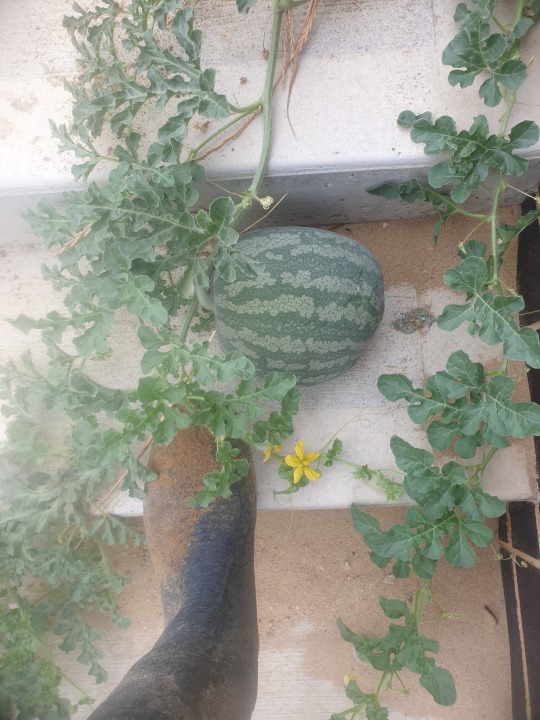
AKA Pie Melon
Despite the large size and resemblance to the watermelon Citrullus lanatus, probably not edible. Although it used to be included in the same species as the watermelon, and the taxonomy of the genus is a little annoying.
Native to the arid parts of sub-Saharan Africa, but present in Australia since at least 1836. It may have been introduced here as camel food. Now found over most of the continent.
1 note
·
View note
Text
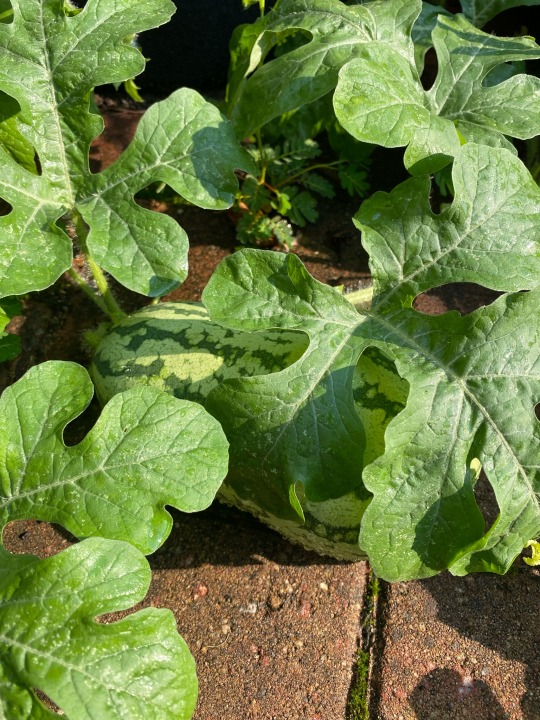


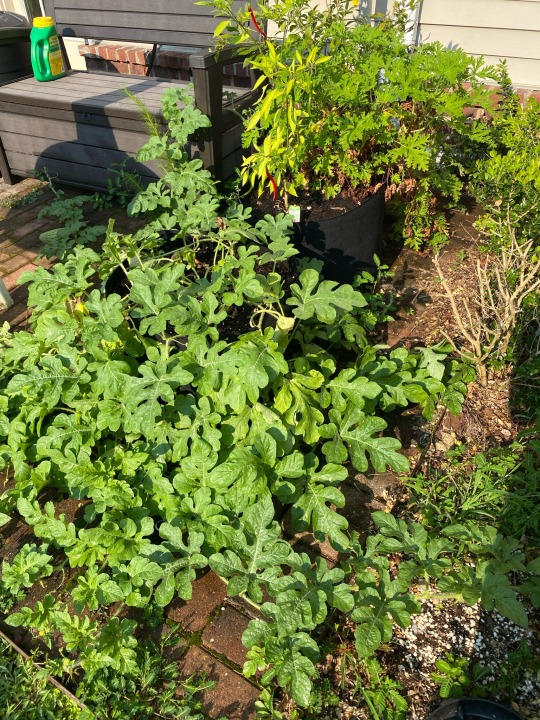

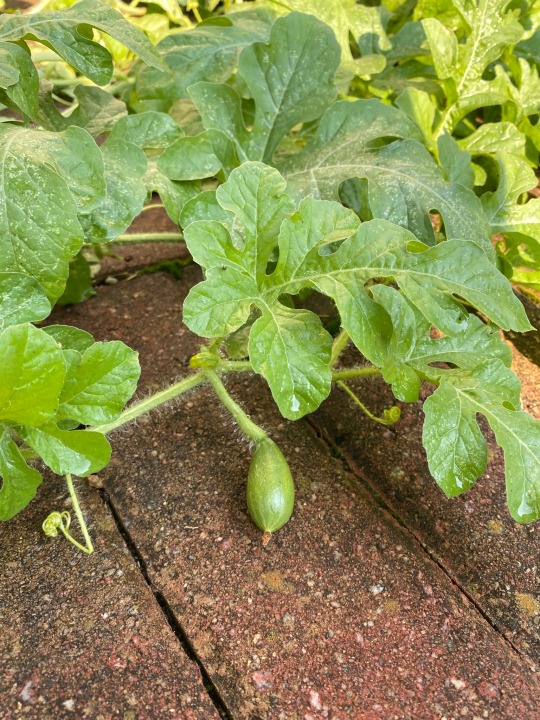

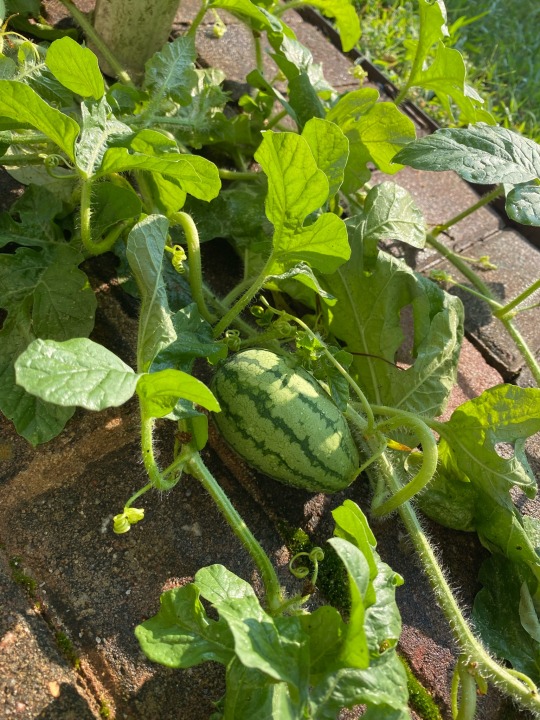
Watermelon update 🥰 🪴 🍉
#my plants#plantblr#plants#garden#gardening#plant#watermelon#watermelons#watermelon plant#citrullus lanatus#melon#melons#fruit#food gardening#fresh fruit#food
31 notes
·
View notes
Text

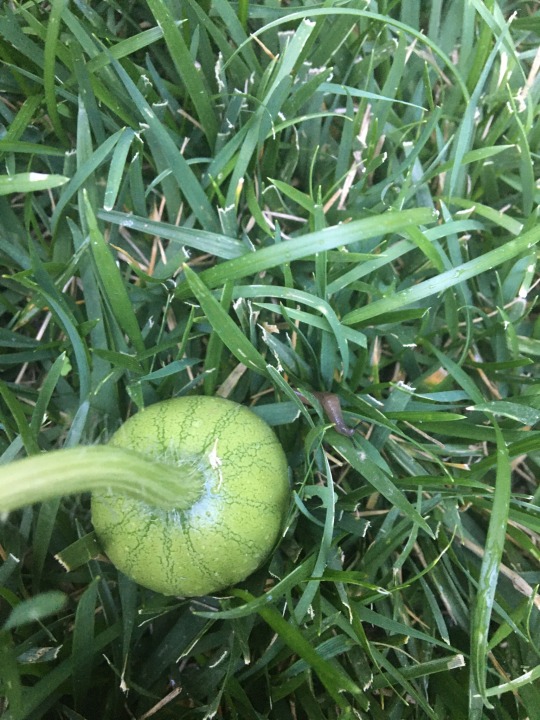
3 notes
·
View notes
Text
Yet another list of historically attested offerings
This is a list of botanical burnt remains found in several temples including:
Sanctuary of Apollo and Artemis, Kalapodi, 10th-9th c. B.C. “Pilier des Rhodies”,
Delphi, 8th-7th c. B.C.
Samian Heraion, 7th c. B.C.
Sanctuary of Demeter and Kore, 5th c. B.C.
Roman Palaimonion, Pit A A.D. 50-100 Palaimonion, Pit C, late 2nd-early 3rd c. B.C.
Heroon of Messene 3rd c. BC
the "x" originally indicates where said remains have been found, I left them in as an indication of frequency.
Cereals
Wheat (Triticum sp) x x x x x x
Barley (Hordeum vulgare) x x x x
Cereal cakes
Legumes
Lentil (Lens culinaris) x x x x x
Fava bean (Vicia faba) x
Pea (Pisum sativum) x x x
Grass pea (Lathyrus sativus) xx x
Chickpea (Cicer arietinum) x
Ervil/bitter betch (Vicia ervilia) xx x
Fruits and nuts
Olives (Olea sp) x x x x
Grape (Vitis vinifera) xx x x
Fig (Ficus carica) x xx x x
Pomegranate (Punica granatum) x x x x x
Apple (Malus sylvestris/Domestica) x
Walnut (Juglans regia) - not found in Greek temples but found in Italian ones.
Hazelnut (Corylus avellana) x
Chestnut (Castanea sativa) x
Almond (Amygdalus communis) x
Date (Phoenix dactylifera) x
Pine (Pinus pinea - bracts and nuts) x x
Oak (Quercus sp - acorns) x x
Quince (Cydonia oblonga) x
Watermelon (Citrullus lanatus) x
Melon (Cucumis melo) x
Pistachio (Pistacia sp) x
Poppy seeds (Papaver somniferum) x x x
Basically: people offered what they had, lists like those are best used as inspiration if you don't know what to offer and informative purposes.
Source: Megaloudi, F. Burnt sacrificial plant offerings in Hellenistic times: an archaeobotanical case study from Messene, Peloponnese, Greece. Veget Hist Archaeobot 14, 329–340 (2005). https://doi.org/10.1007/s00334-005-0083-x
#offerings#historical offerings#hellenic paganism#hellenic religion#hellenic devotion#hellenic reconstructionism#hellenic gods#hellenic pagan#hellenic polytheism#hellenic deities#hellenic community
391 notes
·
View notes
Photo

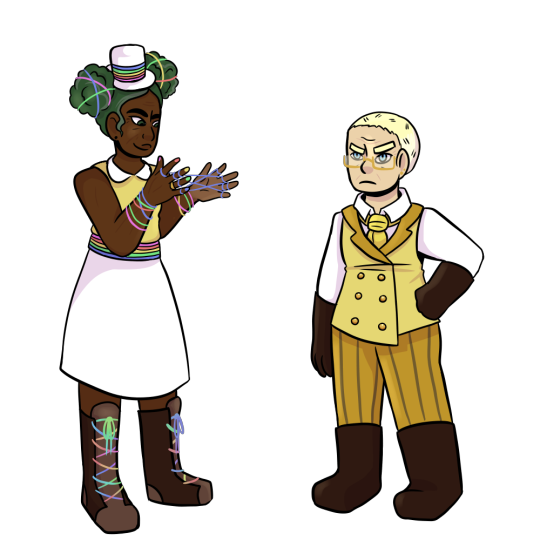
A bunch of OC !
I changed most of the names, but they’re based on what I got from the gloomverse character generator !
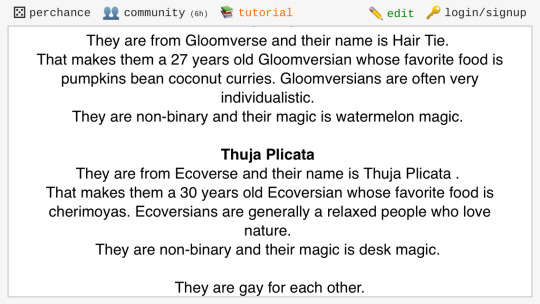
Thuja Plicata is now named Citrullus Lanatus,or Lana for short, and they have watermelon hair, because I thought it would be cute if Hair Tie (or Tie for short (it’s a nickname)) got watermelon magic because of their crush on Lana ^^
Not pictured here, but Tie’s hat is a bowler hat (chapeau melon [melon hat] in french)
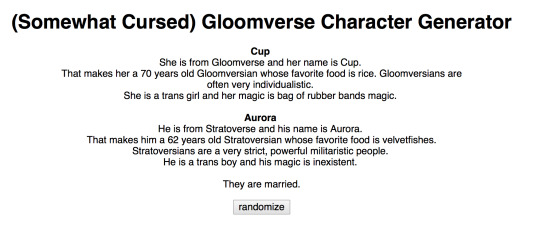
I changed Cup’s name to Spring, tho I’m also considering Ela(stic)
Aurora is now Sol. He’s wearing yellow and named himself Sol (short for soleil [sun], but can also means ground) as a ‘fuck you’ to stratoverse.
Hair Tie is Spring and Sol’s kid ! They got the nickname ‘Hair Tie’ because of all the rubber bands their mom used to style their hair :)
24 notes
·
View notes
Photo
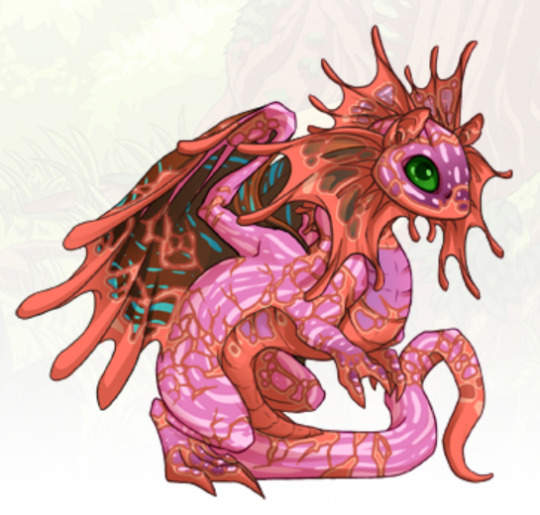
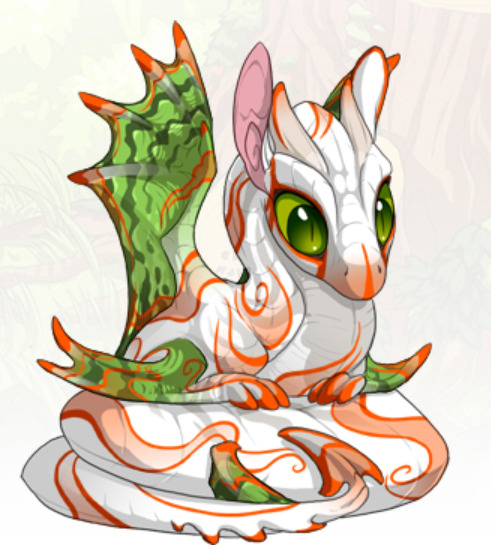

Today’s children!
We have -
From Zaprifabi and Mirabelle, and so tapir/striation/crackle,
Cara (fae female), named for the cara cara navel orange, for her pink and tangerine colouring
Cara Cara oranges look like this -

Then, two from Myoga and Purslane, so one has the smoke gene and the other ringlets,
Suika (spiral male), named for Citrullus lanatus 'Japanese Cream-Fleshed Suika', watermelon, for his wings that look like watermelon skin and his white colouring
Japanese Cream-Fleshed Suika watermelon look like this -

Makuwa (spiral male), named for Korean melon, Cucumis melo var. makuwa, cs since they’re brothers I thought they ought both be named for melons, and for his colouring
Korean melons look like this -

I’m thinking I’ll keep Cara, cs I have plenty of pink male dragons but barely any pink female dragons, and Suika’s pear peregrine gene is too perfect for his plant to let him go, but Makuwa will probably go to the AH (even tho he is very pretty)
#flight rising#i have no strategy at all except pretty colours#my username's deesprite#all fruit photos from a google search of said fruit
1 note
·
View note